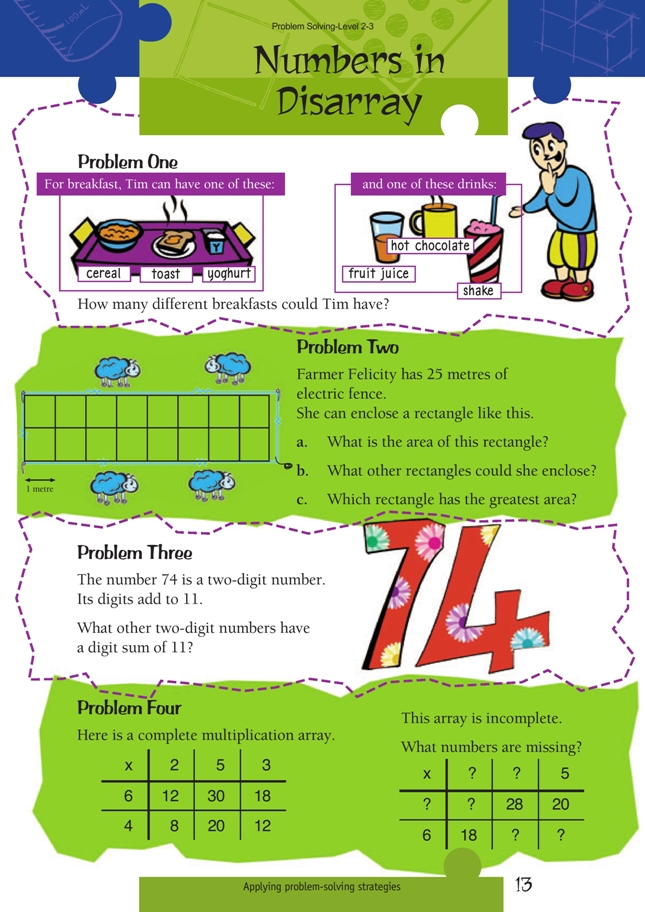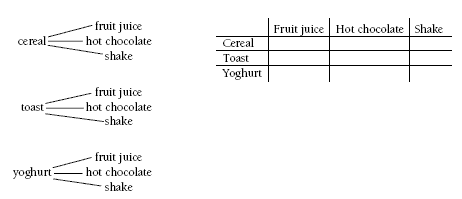These are level 3 number, measurement, and statistics problems from the Figure It Out series.
A PDF of the student activity is included.
Click on the image to enlarge it. Click again to close. Download PDF (227 KB)
find outcomes using diagrams (Problem 1)
find areas of rectangles (Problem 2)
solve multiplication and division facts (Problem 4)
Problem One
Making a model of the problem with pictures or names of the different foods and drinks on pieces of paper will allow students to experiment with possible pairings. As with other combination problems, organised lists, making a table, and drawing a tree diagram are useful strategies.
The problem can be made more difficult by adding other foods and drinks, for example, fruit salad and water, or another course, such as scrambled eggs or baked beans.
Problem Two
Note that the answers to this question will depend on whether all or some of the electric fence is used. Students may need to be reminded that area refers to the number of square units contained in the figure. This can be found by one-by-one counting, repeated addition (2 + 2 + 2 + 2 + 2 + 2 + 2 + 2), or multiplication (8 x 2), which is the most efficient strategy.
Students can draw different-sized rectangles on squared paper. This can be approached systematically by decreasing the length and increasing the width by a corresponding amount (see the diagrams in the Answers section).
Students may not realise that a square is a type of rectangle and therefore the 6.25 x 6.25 rectangle gives the greatest area. They may wish to investigate which rectangle with a perimeter of 16 metres has the greatest area. Encourage them to recognise that in both problems, the square has the greatest area.
Problem Three
This problem will be most efficiently solved in an organised way, beginning with 74 and decreasing one digit while increasing the other.
29 38 47 56 65 74 83 92
Note that eight two-digit numbers have a digit sum of 11. Other digit sums could be investigated.
For example, nine two-digit numbers have a digit sum of nine:
18 27 36 45 54 63 72 81 90
Problem Four
Students will need to work from what is known to what is unknown in a systematic way.
Problems of this type can be developed in the following way:
i. Put in two numbers
ii. Put in a new number
iii. Continue putting inthat will tell you a that will tell you one number at a time,
third number (circled). another answer (circled). circling numbers that can be found from it.
iv. When the grid is complete, erase the circled another person to solve.
numbers.
v. This leaves a problem for another person to solve.
Encourage students to develop their own grids.
Answers to Problems
1. 9
2. a. 16 m2
b. There are a range of answers, depending on whether all or some of the electric fence is used.
Possible answers include rectangles which are squares, such as 3 m x 3 m or 6 m x 6 m, or rectangles such as 6 m x 4 m or 9 m x 3 m.
You could also have rectangles using fractions, such as 10 m x 2.5 m, 6 m x 6.5 m,
or 6.25 m x 6.25 m.
c. The 6.25 m x 6.25 m rectangle has the greatest area (39.0625 m2).
3. 47, 65, 56, 38, 83, 29, 92
4.








